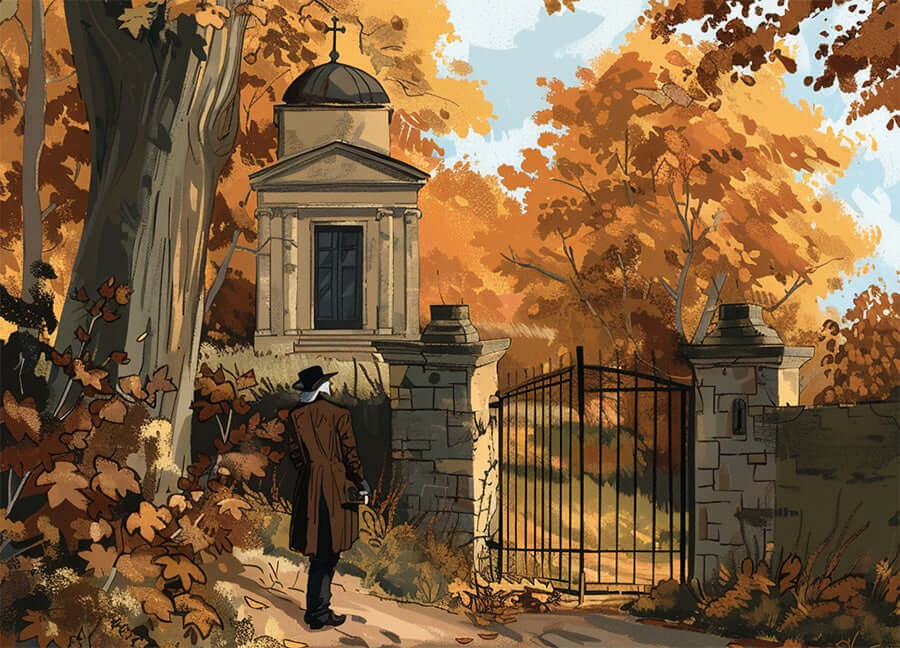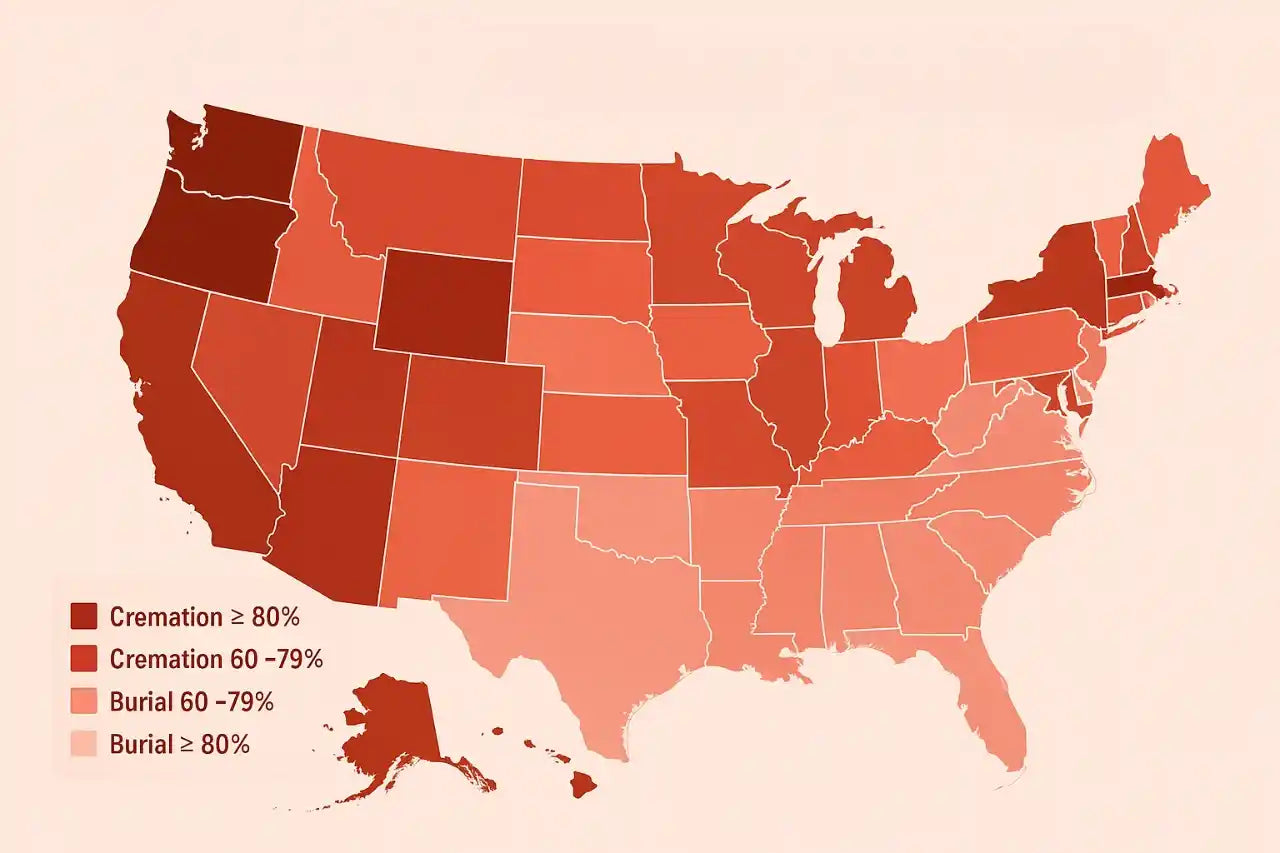Presidential grave markers serve as solemn reminders of the legacies left by the leaders of the United States. These markers are not just simple gravestones; they often reflect the history, values, and accomplishments of the presidents they commemorate. Let's delve into the traditions, requirements, and notable examples of presidential grave markers, providing insights into how these symbols of remembrance are chosen and maintained.
Government-Furnished Headstones and Grave Markers
The tradition of government-furnished headstones and markers has deep roots, evolving significantly since the Civil War era. Initially, wooden headboards marked soldiers' graves, a practical yet temporary solution. Recognizing the need for a more durable and respectful alternative, the U.S. government standardized the use of stone markers by 1873. These durable markers ensured that the service and sacrifice of military personnel, including future presidents, were commemorated in a lasting manner (VA.gov | Veterans Affairs).
The Department of Veterans Affairs (VA) is crucial in this tradition by providing headstones or markers for eligible veterans at no cost. This service is available for any cemetery worldwide, regardless of whether the grave is already marked with a private headstone. For veterans who died on or after November 1, 1990, the VA can provide a marker even if the grave has a private headstone.
The types of markers available include flat markers in granite, marble, and bronze and upright headstones in granite and marble. Bronze niche markers are also available for marking columbaria used for cremated remains. The choice of marker must comply with the cemetery regulations where it will be placed, ensuring uniformity and respect across various burial sites.
In national cemeteries, such as Arlington National Cemetery, cemetery officials are responsible for ordering and setting these markers based on information provided by the next of kin. This process ensures that each marker accurately reflects the service and identity of the deceased. The VA also extends this service to state veterans' cemeteries and military post/base cemeteries, maintaining a consistent standard of honor and dignity.
Eligibility for a government-furnished headstone or marker is extended to any deceased veteran discharged under conditions other than dishonorable and any member of the U.S. Armed Forces who dies on active duty. This eligibility also includes members of the National Guard or Reserves who meet specific criteria. Importantly, the VA ensures that spouses and dependents are also eligible for markers, provided they are buried in a national, state, or military cemetery).
The design and material of these markers have been thoughtfully chosen to endure the test of time and weather, reflecting the nation's enduring respect for its service members. The transition from temporary wooden markers to permanent stone headstones underscores a commitment to honoring military service with dignity and respect. This tradition ensures that the final resting places of the nation's heroes, including its presidents, are marked with the reverence they deserve (VA.gov | Veterans Affairs).
Notable Presidential Grave Markers
Presidential grave markers serve as final resting places and enduring symbols of the legacies left by the leaders of the United States. These markers often reflect significant historical contexts, personal achievements, and the values these presidents hold, creating a unique tapestry of remembrance.

Abraham Lincoln
Abraham Lincoln's tomb at Oak Ridge Cemetery in Springfield, Illinois, stands as one of the most significant presidential memorials. The tomb, which has been moved and opened multiple times due to security concerns and public interest, is a grand structure that includes inscriptions highlighting Lincoln's achievements and his profound impact on American history. The 117-foot-tall monument features statues and inscriptions that pay tribute to his leadership during the Civil War and his dedication to preserving the Union (Presidents USA).

John F. Kennedy
John F. Kennedy's gravesite at Arlington National Cemetery is distinguished by the iconic eternal flame lit by his wife, Jacqueline Kennedy, during his funeral. This eternal flame symbolizes the enduring nature of his legacy and has become a powerful symbol of his presidency. Positioned with a view of the Lincoln Memorial and the Washington Monument, Kennedy's gravesite underscores his connection to the nation’s history and his vision for the future. The simple yet poignant inscription reads "John Fitzgerald Kennedy 1917-1963," reflecting his life and service's brevity yet profound impact (Presidents USA).

Ulysses S. Grant
In New York City, Ulysses S. Grant's tomb, known as the General Grant National Memorial, is the largest mausoleum in North America. This imposing structure reflects Grant's stature as a Civil War hero and two-term president. The memorial, often referred to as "Grant's Tomb," features inscriptions and reliefs that highlight his military and presidential accomplishments. The grandeur of the tomb underscores Grant's significant contributions to the nation, both as a military leader and as a statesman (Presidents USA).

Ronald Reagan
Ronald Reagan's grave at the Ronald Reagan Presidential Library in Simi Valley, California, features an epitaph that encapsulates his optimistic outlook: "I know in my heart that man is good, that what is right will always eventually triumph, and there is purpose and worth to each and every life." This personalized inscription captures the essence of Reagan's legacy and personal beliefs, reflecting his influence as a communicator and his hopeful vision for America(Presidents USA).

James A. Garfield
James A. Garfield's tomb at Lake View Cemetery in Cleveland, Ohio, is notable for its public display of both the president's and his wife's caskets. The 180-foot-tall Garfield Memorial, a prominent landmark within the cemetery, highlights Garfield's brief tenure and tragic assassination. Inside, visitors can see the intricately designed sarcophagus and stained glass windows that depict key moments from Garfield's life, providing a comprehensive tribute to his legacy(Road Trips & Coffee).
Thomas Jefferson
Thomas Jefferson’s grave marker at Monticello is uniquely personal. It lists the achievements he valued most: "Author of the Declaration of American Independence, of the Statute of Virginia for Religious Freedom, & Father of the University of Virginia." This inscription reflects Jefferson’s priorities and his lasting impact on the foundation of American democracy, religious freedom, and education (Monticello).
These notable presidential grave markers are more than just final resting places; they are monuments to the enduring legacies of the leaders who have shaped the United States. From Lincoln and Grant's grand tombs to Jefferson and Reagan's personalized inscriptions, these markers provide a deep and lasting connection to the nation's history. Each marker, with its unique design and inscription, offers a glimpse into these American presidents' values, achievements, and enduring legacies.
Traditions of Simplicity and Respect
Presidential grave markers often embody the traditions of simplicity and respect, reflecting the somber dignity of the office. Many of these markers are designed to be understated, emphasizing the service and sacrifice of the presidents rather than personal grandeur. This approach ensures that the focus remains on their contributions to the nation.

For instance, George Washington's tomb at Mount Vernon is marked with a simple inscription, “Within this Enclosure Rest the remains of Gen. George Washington.” This modesty aligns with the early American values of humility and service, reflecting Washington's personal character and the ethos of his time. Similarly, Dwight D. Eisenhower’s resting place in Abilene, Kansas, features a simple, upright granite headstone, befitting his straightforward, unpretentious nature (Presidents USA).
The design of these markers often reflects personal or family preferences, adhering to the principle that the final resting place should honor the individual’s legacy in a manner befitting their life and service. For example, Thomas Jefferson’s marker at Monticello lists the achievements he held most dear, presenting a personalized yet respectful tribute(Monticello).
This tradition extends to the materials and inscriptions chosen, which are carefully selected to endure the test of time and weather, ensuring that the legacy of service and sacrifice remains prominent for future generations. The uniformity and dignity of these markers, particularly in national cemeteries, provide a consistent and respectful commemoration of the nation's leaders.
Requirements and Guidelines
The National Cemetery Administration (NCA) oversees the standards and guidelines for grave markers in national cemeteries, ensuring uniformity and respect. These guidelines dictate the size, material, and inscriptions allowed on the markers, maintaining a consistent appearance across various burial sites.
Markers provided by the Department of Veterans Affairs (VA) include flat markers in granite, marble, and bronze and upright headstones in granite and marble. Bronze niche markers are also available for columbaria used for cremated remains. The choice of marker type must comply with the specific regulations of the cemetery where it will be placed.
Eligibility for a government-furnished headstone or marker extends to any deceased veteran discharged under conditions other than dishonorable and any member of the U.S. Armed Forces who dies on active duty. This eligibility also includes members of the National Guard or Reserves who meet specific criteria. Importantly, spouses and dependents are eligible for markers if they are buried in a national, state, or military cemetery.
In national cemeteries, cemetery officials handle the ordering and setting of these markers, ensuring each one accurately reflects the service and identity of the deceased. The VA also provides this service to state veterans' cemeteries and military post/base cemeteries, maintaining a high standard of honor and dignity across all sites.
The materials and inscriptions chosen for these markers are designed to endure the test of time and weather, ensuring the legacy of service and sacrifice remains prominent for future generations. This approach underscores a commitment to honoring military service with dignity and respect, ensuring the final resting places of the nation's heroes are appropriately marked.
US Presidential Epitaphs
Here's a catalog of the headstone epitaphs of various U.S. presidents:
- George Washington - No epitaph; his tomb at Mount Vernon simply reads "Within this Enclosure Rest the remains of Gen. George Washington."
- John Adams - His epitaph reads, "Here lies John Adams, who took upon himself the responsibility of the peace with France in the year 1800."
- Thomas Jefferson - Jefferson's epitaph at Monticello reads, "Author of the Declaration of American Independence, of the Statute of Virginia for religious freedom, & Father of the University of Virginia".
- James Madison - His epitaph at Montpelier is simple: "Madison" on a modest obelisk.
- James Monroe - His epitaph at Hollywood Cemetery in Richmond, Virginia, reads, "James Monroe, Author of the Monroe Doctrine."
- John Quincy Adams - His tomb in the United First Parish Church reads, "Here lies John Quincy Adams, son of John and Abigail Adams, sixth president of the United States."
- Andrew Jackson - At the Hermitage, his epitaph reads, "General Andrew Jackson, 7th President of the United States."
- Martin Van Buren - His epitaph in Kinderhook, New York, reads, "Martin Van Buren, Eighth President of the United States."
- William Henry Harrison - His epitaph at North Bend, Ohio, reads, "William Henry Harrison, 1773-1841, Ninth President of the United States."
- John Tyler - His epitaph in Richmond, Virginia, reads, "John Tyler, President of the United States, 1841-1845."
- James K. Polk - His epitaph in Nashville, Tennessee, reads, "James Knox Polk, 11th President of the United States."
- Zachary Taylor - His tomb in Louisville, Kentucky, has no specific epitaph, just his name and dates.
- Millard Fillmore - His epitaph in Buffalo, New York, reads, "Millard Fillmore, President of the United States, 1850-1853."
- Franklin Pierce - His epitaph in Concord, New Hampshire, reads, "Franklin Pierce, Fourteenth President of the United States."
- James Buchanan - His epitaph in Lancaster, Pennsylvania, reads, "James Buchanan, Fifteenth President of the United States."
- Abraham Lincoln - His tomb in Springfield, Illinois, reads, "Abraham Lincoln, 1809-1865."
- Andrew Johnson - His epitaph in Greeneville, Tennessee, reads, "Andrew Johnson, 17th President of the United States."
- Ulysses S. Grant - His epitaph in New York City reads, "Let us have peace," and "Ulysses S. Grant, 18th President of the United States."
- Rutherford B. Hayes - His epitaph in Fremont, Ohio, reads, "Rutherford Birchard Hayes, Nineteenth President of the United States."
- James Garfield - His epitaph in Cleveland, Ohio, reads, "James Abram Garfield, Twentieth President of the United States."
- Chester A. Arthur - His epitaph in Albany, New York, reads, "Chester Alan Arthur, Twenty-First President of the United States."
- Grover Cleveland - His epitaph in Princeton, New Jersey, reads, "Grover Cleveland, Twenty-Second and Twenty-Fourth President of the United States."
- Benjamin Harrison - His epitaph in Indianapolis, Indiana, reads, "Benjamin Harrison, Twenty-Third President of the United States."
- William McKinley - His epitaph in Canton, Ohio, reads, "William McKinley, Twenty-Fifth President of the United States."
- Theodore Roosevelt - His epitaph in Oyster Bay, New York, reads, "Theodore Roosevelt, 1858-1919."
- William Howard Taft - His epitaph at Arlington National Cemetery reads, "William Howard Taft, 27th President of the United States."
- Woodrow Wilson - His epitaph in Washington National Cathedral reads, "Woodrow Wilson, 28th President of the United States."
- Warren G. Harding - His epitaph in Marion, Ohio, reads, "Warren Gamaliel Harding, 29th President of the United States."
- Calvin Coolidge - His epitaph in Plymouth Notch, Vermont, reads, "Calvin Coolidge, 30th President of the United States."
- Herbert Hoover - His epitaph in West Branch, Iowa, reads, "Herbert Hoover, 31st President of the United States."
- Franklin D. Roosevelt - His epitaph in Hyde Park, New York, reads, "Franklin Delano Roosevelt, 32nd President of the United States."
- Harry S. Truman - His epitaph in Independence, Missouri, reads, "Harry S. Truman, Thirty-Third President of the United States."
- Dwight D. Eisenhower - His epitaph in Abilene, Kansas, reads, "Dwight David Eisenhower, 34th President of the United States."
- John F. Kennedy - His epitaph at Arlington National Cemetery reads, "John Fitzgerald Kennedy, 1917-1963," with an eternal flame nearby.
- Lyndon B. Johnson - His epitaph in Stonewall, Texas, reads, "Lyndon Baines Johnson, 1908-1973."
- Richard Nixon - His epitaph in Yorba Linda, California, reads, "The greatest honor history can bestow is the title of peacemaker."
- Gerald Ford - His epitaph in Grand Rapids, Michigan, reads, "Lives Committed to God, Country, and Love."
- Jimmy Carter - No epitaph as he is still living.
- Ronald Reagan - His epitaph in Simi Valley, California, reads, "I know in my heart that man is good, that what is right will always eventually triumph, and there is purpose and worth to each and every life" (Home).
- George H. W. Bush - His epitaph in College Station, Texas, reads, "George Herbert Walker Bush, 41st President of the United States."
Shopping online for cemetery headstones and grave markers can save you $1000s of dollars while providing a wider selection of stones and more customized designs and inscriptions. Signature Headstones’ easy-to-use online headstone customizer gives you the ability to design the perfect memorial for your loved one. Our art and design professionals are also ready to guide you through the entire process if you need extra help. Get started today by choosing a headstone style!



